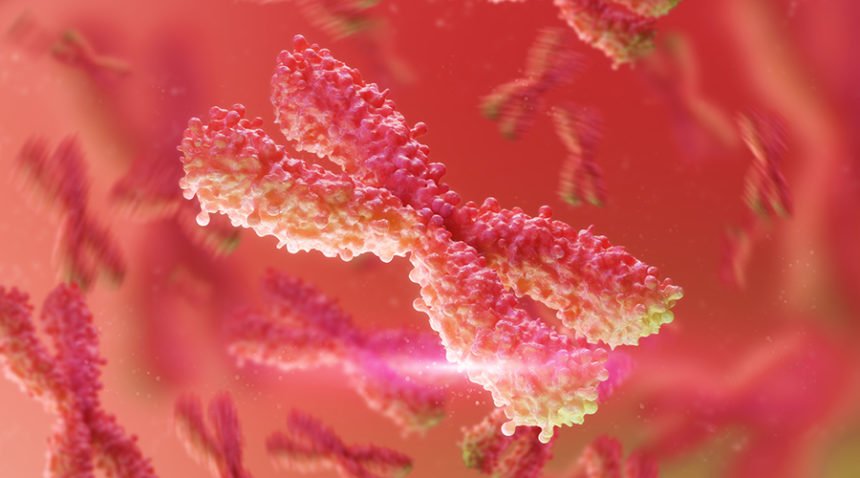This chromosomal condition causes short stature and a lack of ovarian development.
When Kate Alvstad was about 4 years old, her mother became concerned about her height. Kate was much shorter than other girls her age, and her mother suspected she might have a medical problem.
“So, we went to see a doctor, and he ran some tests. When the results came back, they told my mom that I had Turner syndrome,” says Alvstad, now 19.
Turner syndrome is a noninherited, chromosomal condition that happens to about one of every 2,500 girls born. It only affects females. Most girls and women have two complete X chromosomes; Turner syndrome is caused when one X chromosome is complete and the other is either missing or incomplete. This missing genetic material prevents the female body from growing and maturing typically. The condition was named for Dr. Henry Turner, who first described it in 1938.

The most common symptoms of Turner syndrome are short stature, usually evident by about age 5, and a lack of ovarian development, which can manifest as absent or stalled puberty, says Jennifer Law, MD, director of the UNC Turner Syndrome Clinic.
The UNC clinic is one of only seven in the United States that is designated as a Regional Resource Center by the Turner Syndrome Global Alliance. This designation means the program is one of the most advanced in the country, is involved in multi-institutional Turner syndrome research, has a program to train or mentor medical students and fellows, and is willing to provide support and resources to other providers in the region as needed.
Treating Short Stature in Girls with Turner Syndrome
Treatment for Turner syndrome usually includes growth hormone therapy. Without it, girls with Turner syndrome reach an average adult height of 4 feet, 8 inches, Dr. Law says.
“Our goal is to help them reach an adult height of at least 5 feet,” she says. “At that height most can function comfortably without having to make special modifications to their homes, such as lowering their countertops, or without having to modify their cars so they are able to drive.”
Alvstad says she started receiving growth hormone shots soon after her diagnosis. Later, when she was 7 years old, she attended a special summer camp specifically for girls with Turner syndrome. “I found that to be really helpful, because every girl there knew what it was like to be the shortest girl in your class,” she says. She later went on to work as a counselor at that camp.
Turner Syndrome May Result in Delayed Sexual Development
A girl with Turner syndrome might not get her first period for years after other girls her age. To help with growth and sexual development, girls with Turner syndrome may begin estrogen replacement therapy around the time of puberty and continue taking it as adults, until they have reached the average age of menopause.
Other Risks and Characteristics Associated with Turner Syndrome
Women with Turner syndrome are also more at risk for immune disorders, such as diabetes, inflammatory bowel disease or hypothyroidism (underactive thyroid); heart defects and heart problems such as aortic dissection (a potentially life-threatening emergency in which the inner layer of the aorta tears); and liver and kidney problems.
Other characteristics of Turner syndrome can include low-set ears, a low hairline at the back of the neck, extra folds of skin on the neck, lymphedema (swelling in the arms and legs), and nonverbal learning disability, also called NLD, which is a dysfunction of the part of the brain that processes nonverbal, performance-based information. Girls and women with Turner syndrome tend to have excellent verbal skills and be highly verbal, but because of NLD, they may have difficulty in understanding nonverbal communication such as body language, facial expressions or sarcasm. NLD can also have a negative impact on physical activities requiring coordination and spatial perception, such as driving a car or riding a bicycle.
The presence or absence of these symptoms is highly variable from one person to another.
Girls and women with Turner syndrome are also prone to having frequent middle ear infections, Dr. Law says, and most will experience hearing loss by age 50, requiring the use of hearing aids.
Living with Turner Syndrome
“Girls and women with Turner syndrome require special health care,” Dr. Law says. “It is a team effort, involving multiple specialties. But with appropriate care, most of these girls become women who are able to lead full, productive and happy lives.”
Alvstad is proof of that. Today she is a college student studying speech pathology, and she stands 5 feet, 1 inch tall. She wants to provide speech therapy in an elementary school or hospital after graduation.
She takes medication for hypothyroidism, which is not uncommon for girls and women with Turner syndrome. For fun, she likes to read, exercise, hang out with her friends and watch a lot of movies (she’s a big Marvel fan).
The UNC Turner Syndrome Clinic offers services at two convenient locations, in Chapel Hill and Raleigh. For more information, call (919) 962-2796.

